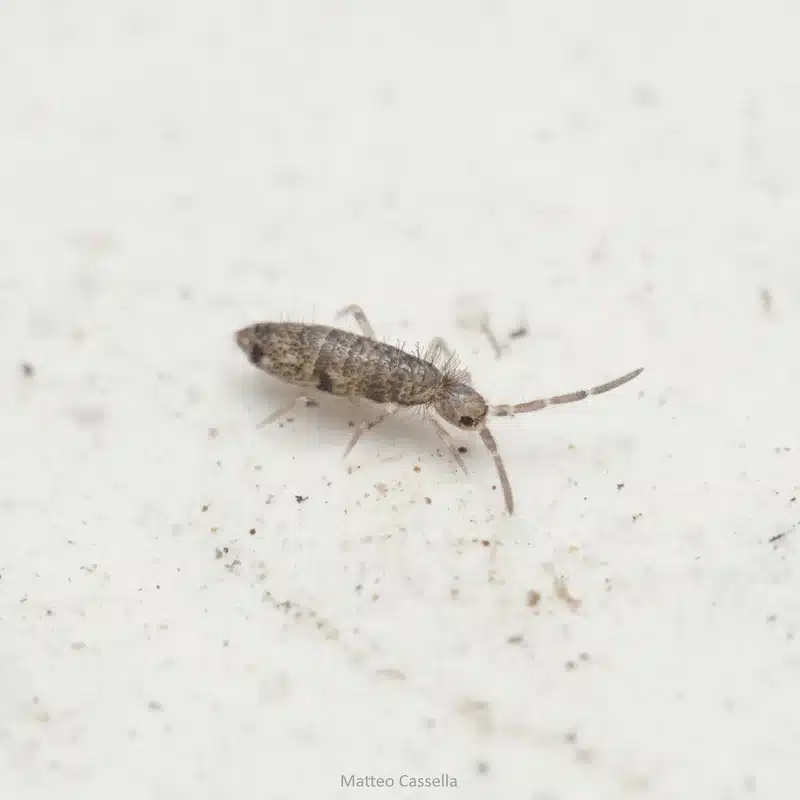Finding tiny jumping bugs in your bathroom can be alarming, especially when they seem to appear out of nowhere. These springtails in bathroom settings are actually more common than you might think. As a registered technician with four years of experience in the DMV area, I’ve helped countless homeowners identify these mysterious little creatures.
While springtails themselves are harmless, their presence tells a bigger story about your bathroom’s moisture levels. In my time working with our family business, which has been serving the region for over 50 years, I’ve learned that these tiny insects are like natural moisture detectors.
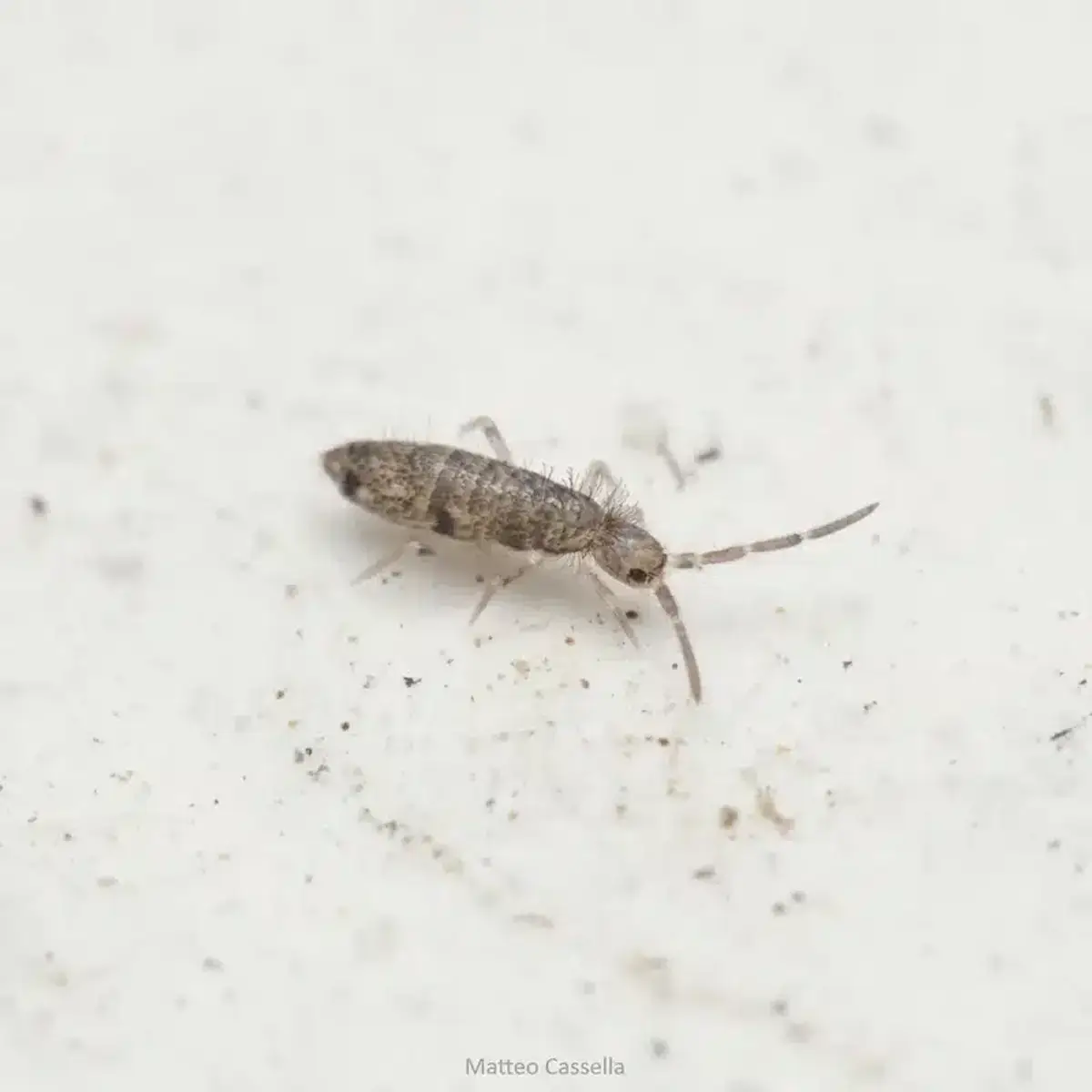
What Are Springtails and How to Identify Them
Springtails are minute, wingless arthropods that measure about 1-2 millimeters long - roughly the size of a pinhead. These creatures have a unique jumping ability thanks to a forked appendage called a furcula tucked under their abdomen. When threatened, they release this “spring” and can hop several inches away.
In bathrooms, springtails typically appear gray or white in color, though they can also be dark gray or brown. Their soft, cylindrical bodies are easily crushed, which distinguishes them from harder-bodied pests like fleas. According to the University of Minnesota Extension, springtails have internal mouthparts rather than external ones, which actually places them in their own class separate from true insects.
The most distinctive behavior of springtails in bathroom environments is their sudden jumping motion. You might notice them hopping around your bathtub, sink area, or near the toilet base. They’re particularly active when disturbed by light or movement.
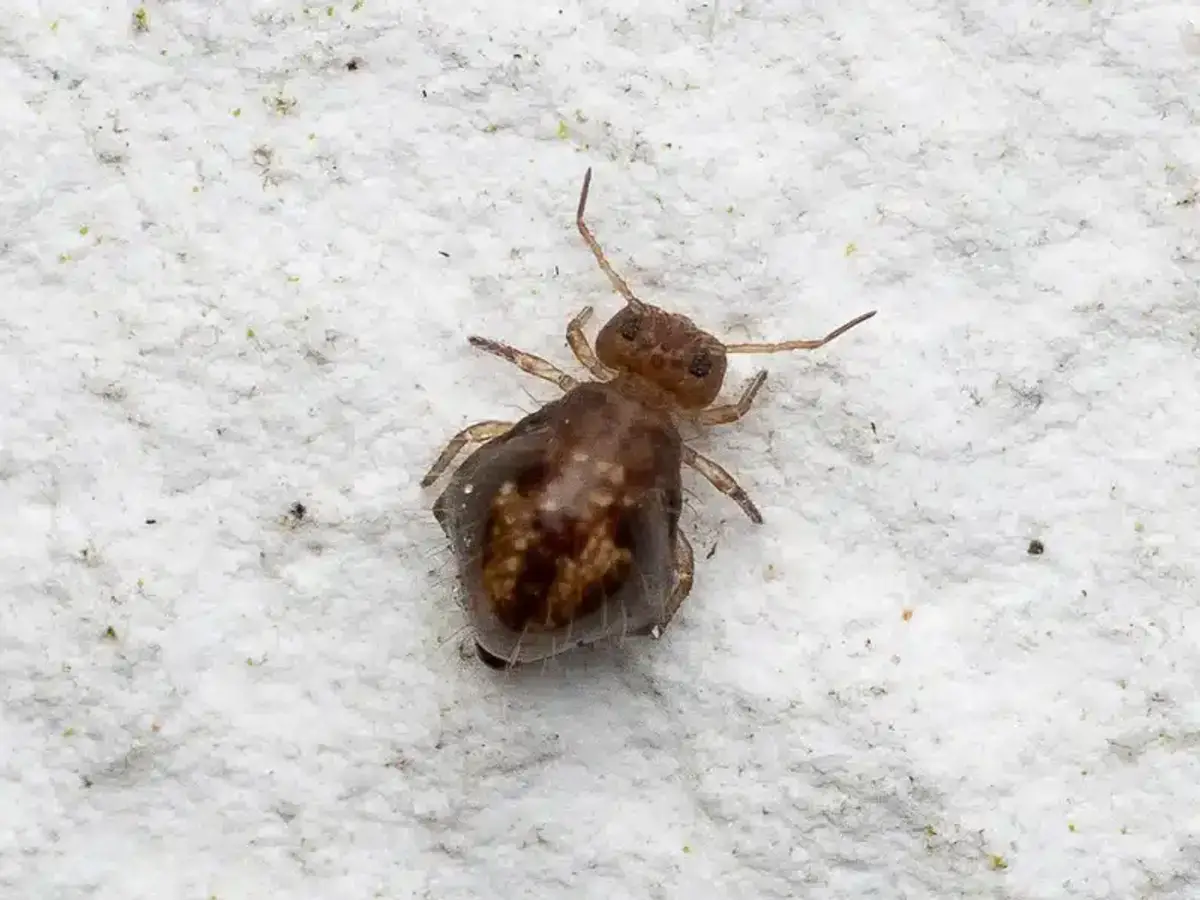
Springtails vs Fleas: Key Differences
Many homeowners confuse springtails with fleas because both jump. However, there are important differences. Fleas have hard, laterally flattened bodies and feed on blood, often leaving behind “flea dirt.” Springtails vs fleas can be distinguished by their soft, rounded bodies and their inability to bite humans or pets.
Additionally, fleas are ectoparasites that live on hosts, while springtails are free-living creatures that feed on mold and organic matter. If you’re seeing jumping bugs in your bathroom specifically, they’re most likely springtails rather than fleas.
Springtails vs Other Bathroom Pests
| Trait | Springtails | Fleas | Silverfish |
|---|---|---|---|
| Size | 1-2mm | 2-4mm | 12-19mm |
| Body Type | Soft, cylindrical | Hard, flattened | Elongated, scaly |
| Bites Humans | No | Yes | No |
| Diet | Mold, fungi | Blood | Paper, starch |
Why Springtails Appear in Bathrooms
Bathrooms create the perfect environment for springtails because these creatures have a physiological dependence on moisture. They lose water rapidly through their thin outer layer and must stay in environments with at least 60% relative humidity or have access to surface water films.
Your bathroom routinely meets these conditions after showers, around drains, and near any leaking fixtures. The University of Missouri Extension notes that springtails can reach densities of up to 50,000 per cubic foot in optimal soil conditions, and similar population explosions can occur indoors when moisture levels remain high.

Food Sources That Attract Springtails
Springtails in bathroom settings feed primarily on mold, fungal spores, algae, and bacterial biofilms. These organisms thrive on grout, caulk, and drywall when bathrooms stay damp. Essentially, springtails graze on the same microorganisms that create those black spots you see in shower corners.
This feeding behavior actually makes springtails useful indicators of hidden mold growth. If you’re seeing them regularly, there’s likely enough organic matter and moisture to support not just springtails, but potentially problematic mold growth as well.
Common Moisture Sources That Attract Springtails
Through my experience helping homeowners in the DMV area, I’ve identified several key moisture sources that create ideal conditions for springtails in bathroom environments:
Active Plumbing Leaks
Hidden leaks are often the culprit behind persistent springtail problems. These include leaking sink traps, toilet supply lines, shower valve penetrations, and failed wax rings at toilet flanges. Even small drips can create enough moisture to support springtail populations.
I always recommend checking under sinks and behind toilets with a flashlight. Look for water stains, soft spots in flooring, or that musty smell that indicates ongoing moisture problems.
Poor Ventilation Issues
Inadequate bathroom ventilation allows humidity to build up and condense on surfaces. This is especially common in older homes throughout Arlington, Falls Church, and other DMV communities where exhaust fans may be undersized or not used properly.
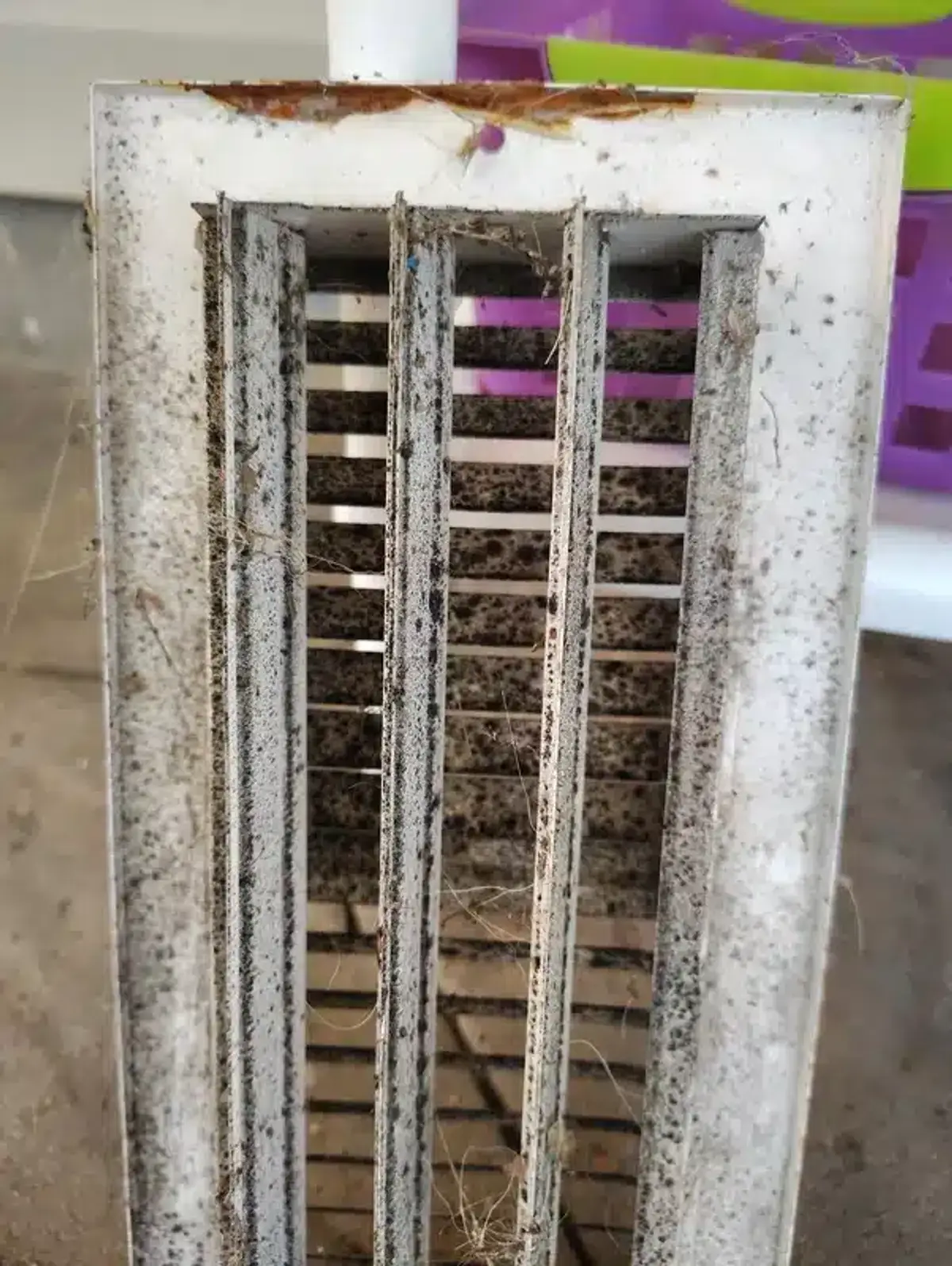
Degraded Seals and Grout
Cracked grout lines, missing caulk around tub edges, and deteriorated seals at vanity backsplashes allow water to penetrate behind surfaces. This creates hidden moisture pockets where springtails can thrive undetected.
Regular inspection of these seals is crucial. If you can probe grout or caulk with a pick and it feels soft or crumbles, water is likely getting through to areas where springtails can establish populations.
Essential Moisture Control Steps
- Leak Detection: Check under sinks, behind toilets, and around shower valves monthly with a flashlight
- Ventilation Improvement: Run exhaust fans for 30+ minutes after showers and upgrade undersized fans
- Seal Maintenance: Inspect and replace cracked caulk and grout every 2-3 years
- Humidity Monitoring: Keep bathroom humidity below 50% using dehumidifiers when necessary
The Moisture-Springtail Connection
Springtails serve as biological moisture meters in your bathroom. According to the Nebraska Extension, their presence indicates humidity levels high enough to sustain mold growth and potentially wood rot.
In my experience working with moisture-related pest issues throughout the DMV area, springtails are often the first warning sign of bigger problems. While the bugs themselves don’t cause damage, the conditions that support them can lead to structural issues if left unchecked.
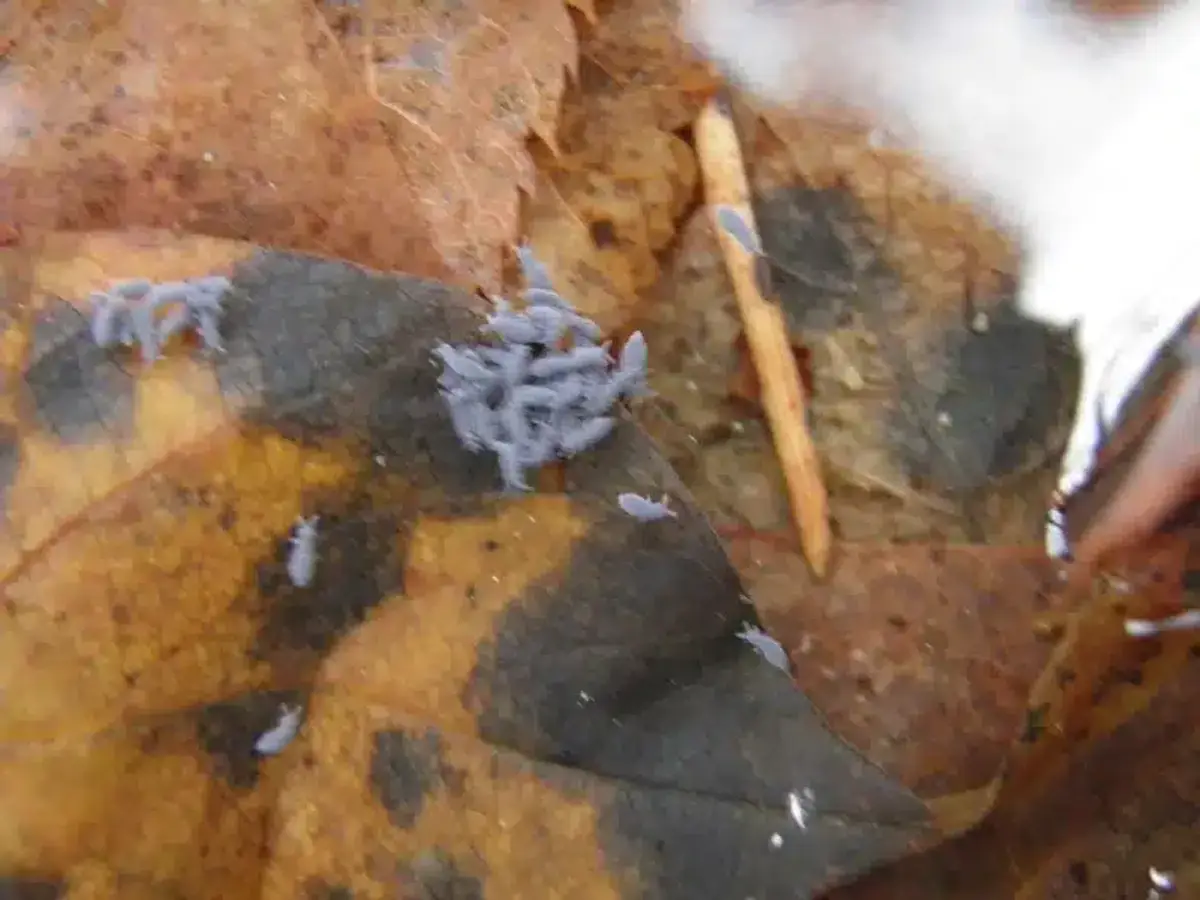
Springtail Population Explosions in Humid Conditions
When bathroom conditions are optimal, springtail populations can explode rapidly. Under ideal moisture and temperature conditions, many species mature in just 4-6 weeks and produce eggs continuously. This explains why you might suddenly see dozens of springtails in your bathroom after noticing just a few initially.
The good news is that these populations collapse just as quickly when moisture levels drop. Most springtails will desiccate within hours to days when relative humidity falls below 50%.
What does the science say?
According to the University of Missouri Extension, springtails can reach population densities of up to 50,000 per cubic foot in optimal conditions. Research shows they mature in just 4-6 weeks under ideal temperature and humidity conditions, producing eggs continuously. The Nebraska Extension notes that their presence indicates humidity levels sufficient to sustain mold growth and potentially wood rot, making them valuable biological indicators of moisture problems that could lead to structural damage.
Effective Solutions for Springtails in Bathroom
The key to eliminating springtails in bathroom settings is moisture control rather than chemical treatments. Based on recommendations from the University of Minnesota Extension, addressing the underlying moisture problem provides long-term control without the need for pesticides.
Immediate Moisture Control Steps
Start with simple moisture reduction techniques that provide immediate results:
- Run your exhaust fan during showers and for at least 30 minutes afterward
- Squeegee shower walls after use to remove standing water
- Keep shower curtains or doors open for better air circulation
- Wash and dry bath mats regularly to prevent moisture buildup
- Vacuum or wipe away visible springtails and dispose of the vacuum bag
Improving Bathroom Ventilation
Proper ventilation is crucial for long-term springtail control. Install timer switches for exhaust fans to ensure they run long enough after showers. For bathrooms without windows, consider adding a dehumidifier to maintain relative humidity below 50%.
In the DMV area’s humid summers, where dew points often reach 65-70°F, adequate exhaust fan capacity becomes even more important. Fans should move at least 80 CFM and vent directly outdoors, not into attic spaces.
Fixing Leaks and Structural Issues
Address any active leaks immediately, as even small drips can sustain springtail populations. This includes:
- Repairing leaking faucets and shower valves
- Replacing damaged wax rings under toilets
- Insulating cold-water pipes to prevent condensation
- Installing proper vapor barriers in crawl spaces
Re-caulking and Grout Maintenance
Remove and replace any cracked or deteriorated caulk and grout. Use mold-resistant silicone caulk around tubs and showers. Pay special attention to areas where different materials meet, as these joints are prone to failure.
For homeowners in bathrooms with recurring pest issues, regular maintenance of these seals prevents moisture intrusion that attracts not just springtails, but other moisture-loving pests as well.
When Springtails Signal Serious Water Damage
Sometimes springtails in bathroom settings indicate problems that require professional assessment. In my years of helping homeowners throughout the DMV area, certain warning signs suggest the need for expert evaluation.
Red Flags That Warrant Professional Help
Contact a professional if you notice:
- Springtails returning within 48 hours despite humidity below 50%
- Musty odors that persist after cleaning
- Soft or spongy drywall around fixtures
- Moisture meter readings above 20% in wall cavities
- Visible water stains or discoloration behind walls
These signs often point to hidden leaks inside wall voids or chronic structural dampness. Left unchecked, these conditions can lead to serious mold problems, wood rot, or even attract more destructive pests like termites.
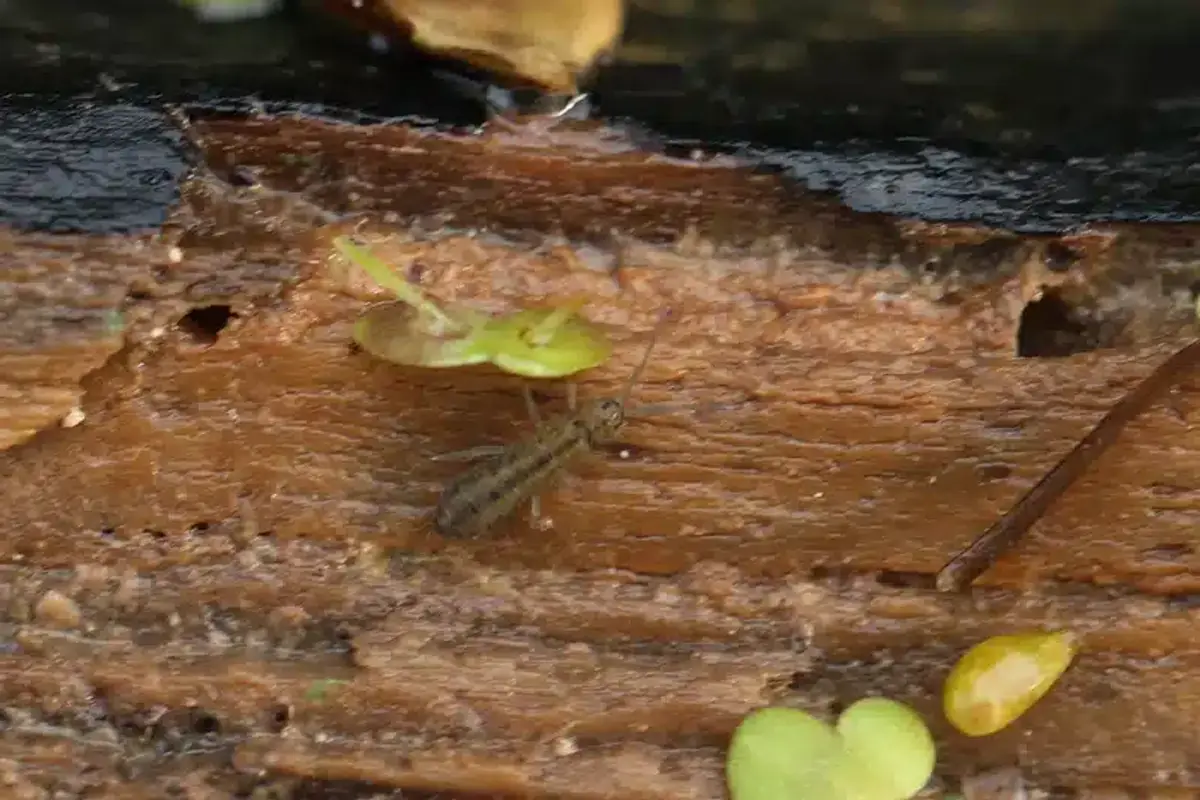
Hidden Moisture Investigation
Professional moisture mapping can reveal problems that aren’t visible during routine inspection. This is particularly important in older DMV area homes, where freeze-thaw cycles can crack exterior caulk around vent stacks, allowing rainwater into wall cavities.
Additionally, many homes built between 1950-1970 on slab foundations lack proper vapor barriers, allowing crawl space humidity to migrate upward into first-floor bathrooms.
Natural Springtail Die-Off When Moisture Is Removed
One of the most encouraging aspects of dealing with springtails in bathroom environments is how quickly they disappear once moisture levels drop. According to the Clemson University Extension, most springtail populations die off within a few days to a week when relative humidity is reduced below their survival threshold.
This natural die-off means that chemical treatments are rarely necessary. In my experience, homeowners who focus on moisture control see much better long-term results than those who rely solely on spraying.
Monitoring Success
Use an inexpensive hygrometer to monitor bathroom humidity levels. Target readings should stay below 50% relative humidity most of the time. If humidity levels are controlled but springtails persist, this suggests a hidden moisture source that needs professional investigation.
Keep in mind that springtail eggs can survive dry conditions longer than adults, so you might see a few stragglers for up to two weeks after implementing moisture control measures.
Dealing with springtails in your bathroom doesn’t have to be overwhelming. These tiny jumping insects are simply telling you that moisture levels need attention. By focusing on ventilation improvements, leak repairs, and proper caulking maintenance, you can eliminate both the springtails and the underlying conditions that attract them.
Remember that while springtails themselves are harmless, they serve as valuable early warning indicators of moisture problems that could lead to more serious issues. Taking action when you first notice them can prevent costlier problems down the road.
If you’re dealing with persistent springtail problems or suspect hidden moisture damage in your bathroom, don’t hesitate to call us at 703-683-2000 or email us at info@bettertermite.com. Our registered technicians have the experience to identify moisture sources and recommend effective solutions for your specific situation.
Frequently Asked Questions About Springtails
Are springtails in my bathroom dangerous?
+
No, springtails are completely harmless to humans and pets. They don't bite, sting, or transmit diseases. However, their presence indicates moisture levels that could support mold growth or attract other pests, so addressing the underlying moisture problem is important.
How do I tell springtails apart from fleas?
+
Springtails have soft, rounded bodies that are easily crushed, while fleas have hard, flattened bodies. Springtails don't bite or feed on blood, and they're typically found in moist areas like bathrooms rather than on pets or furniture. For more details, check our [springtail vs flea comparison guide](/springtail-vs-flea/).
Why do springtails keep coming back to my bathroom?
+
Persistent springtail problems usually indicate an ongoing moisture source. This could be a hidden leak, poor ventilation, or damaged caulk and grout allowing water penetration. Until the moisture source is eliminated, springtails will continue to return.
Can I use bug spray to get rid of springtails?
+
While insecticides can provide temporary relief, they don't address the moisture conditions that attract springtails. Moisture control is much more effective for long-term elimination. Most springtail populations naturally die off within days when humidity levels drop below 50%.
What humidity level prevents springtails in bathrooms?
+
Keeping bathroom humidity below 50% relative humidity will prevent most springtail problems. Use exhaust fans during and after showers, fix leaks promptly, and consider a dehumidifier in particularly humid conditions or windowless bathrooms.
How long does it take for springtails to go away after fixing moisture problems?
+
Most adult springtails will die off within a few days to a week once humidity levels drop below their survival threshold. However, you might see some activity for up to two weeks as any remaining eggs hatch in the now-dry environment.
Should I be worried about other pests if I have springtails?
+
Springtails themselves don't attract other pests, but the moisture conditions that support them can attract [silverfish](/silverfish-in-bathroom/), [other moisture-loving insects](/tiny-black-bugs-in-bathroom/), and even create conditions favorable for termites. Addressing moisture problems helps prevent multiple pest issues.
Can springtails damage my bathroom?
+
Springtails themselves cause no damage - they don't chew wood, fabric, or other materials. However, the moisture conditions they indicate can lead to mold growth, wood rot, and structural damage if not addressed. Think of them as helpful indicators rather than harmful pests.
With five years of hands-on experience in the pest control industry, George Schulz is a registered technician with the Virginia Pest Management Association and a proud third-generation professional in a family business that's been protecting homes for over 57 years. He manages and trains a team of service pros while also leading internal research efforts—recently spearheading a deep-dive review of thousands of documents on pest control materials to hand-pick the most kid and pet friendly, most effective solutions tailored specifically for homes in the DC metro area.
